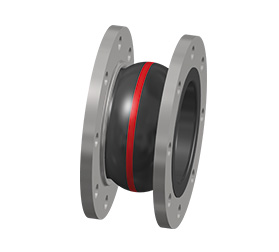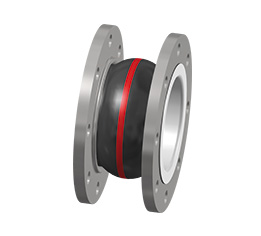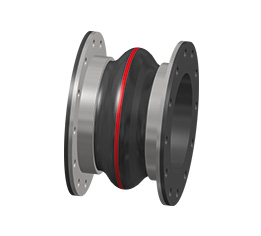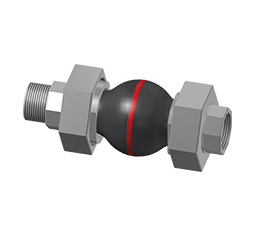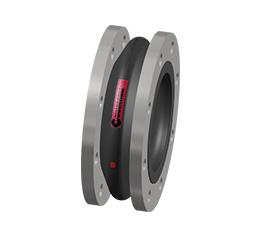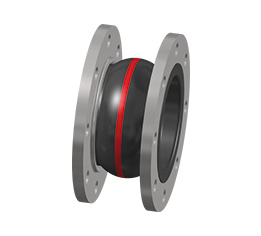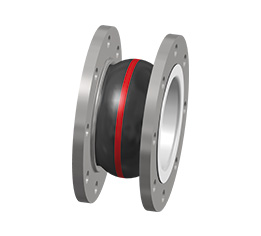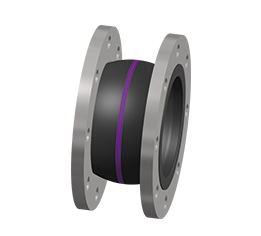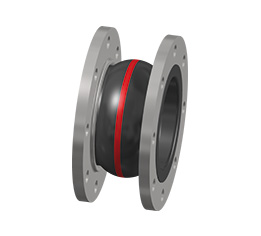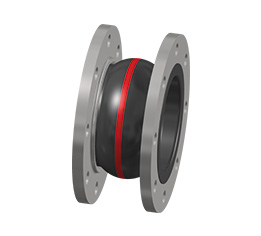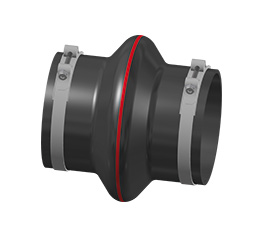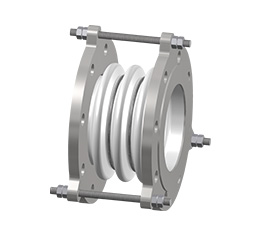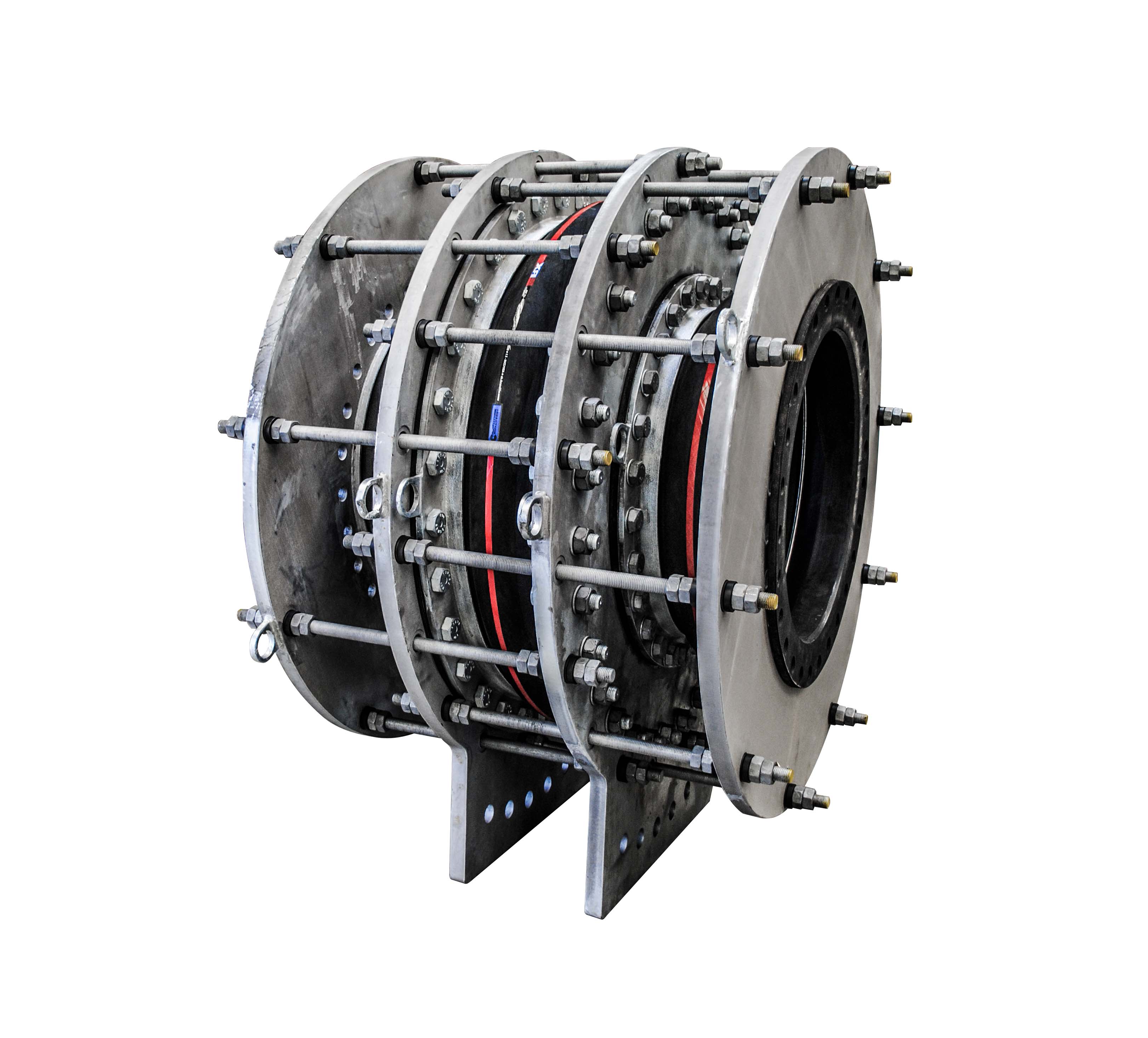RUBBER EXPANSION JOINTS & BELLOWS
In order to offer a complete product range for our customers, Belman also designs and supplies Rubber Expansion Joints. As our core competence is the design and manufacture of Metal Expansion Joints, we have formed close partnerships with experienced and skilled manufacturers of Rubber Expansion Joints. With suitable solutions available at Belman, customers derive the same benefits from our Rubber Bellows as from our Metallic Bellows.
A Rubber Expansion Joint is a flexible unit that is manufactured from natural or synthetic elastomers or fluoroplastics and, if necessary, a reinforcement of the bellow (steel, nylon or aramid) is added. Rubber Bellows are the perfect solution for pipe systems to absorb movements, vibrations as well as reduce noise, resulting in a long service life of the pipe work and connected equipment.
Design range within Rubber Expansion Joints
Staying true to our core competences, we are – aside from a large standard product program – also able to provide customised solutions within Rubber Expansion Joints. As always, we welcome challenging tasks, and we will deliver the most effective solution from both the operational and economic perspective. Belman Rubber Expansion Bellows can be designed within the following range:

DIMENSIONS:
Up to DN 5000

PRESSURE:
Up to 25 Barg / 362 psi

TEMPERATURE:
Up to +130°C

MATERIALS:
EPDM, Pertunan NBR, Hypalon
CSM, Butyl IIR, Viton®, SI, ECO,
Chlorprene CR.

TESTS:
Visual test, pressure test
or as per
client specifications

CERTIFICATES:
Bureau Veritas, Lloyd’s Register,
DNV, China Class Societies
and more on request
RUBBER EXPANSION BELLOWS
Belman offers a wide range of Rubber Expansion Bellows to provide our customers with a comprehensive product selection. Here, you’ll find further information about our different types of Rubber Bellows:
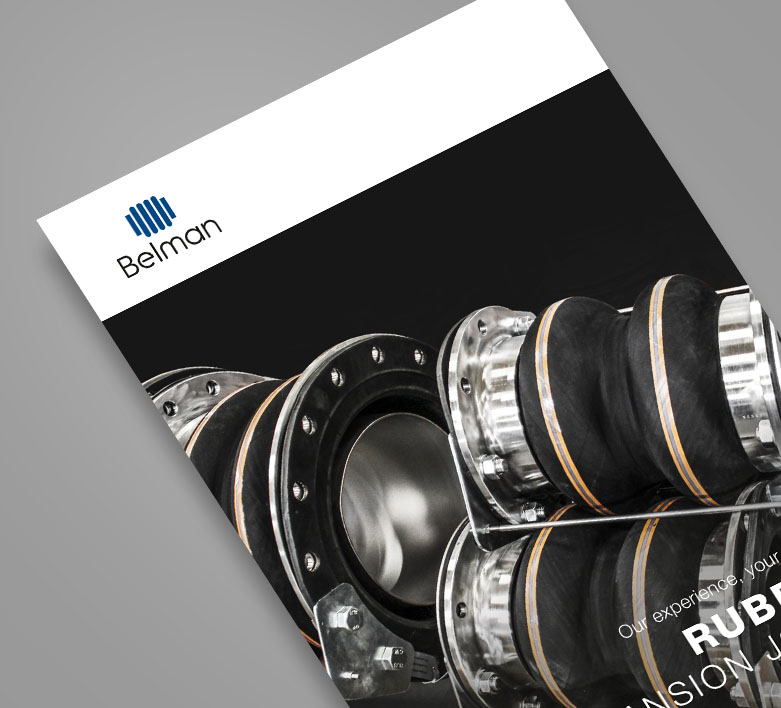
GET THE
PRODUCT
BROCHURE
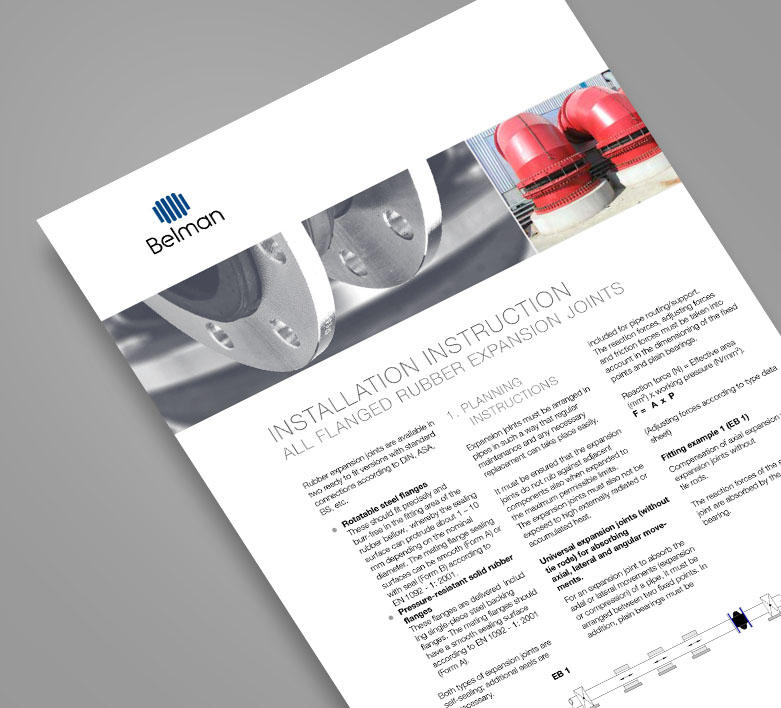
GET THE
INSTALLATION
INSTRUCTION
RUBBER EXPANSION JOINTS
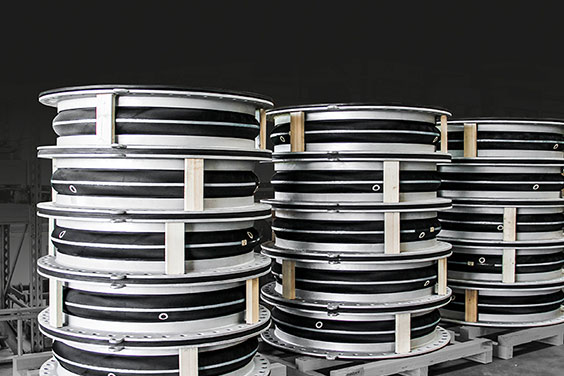
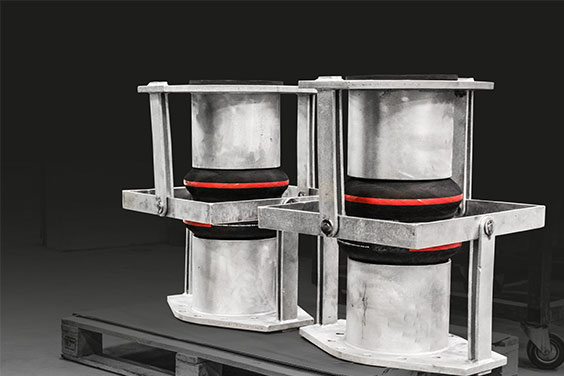
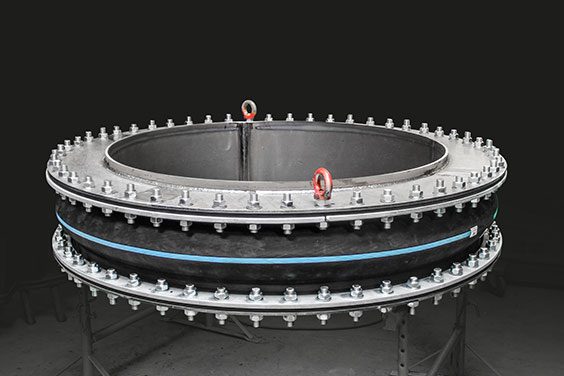
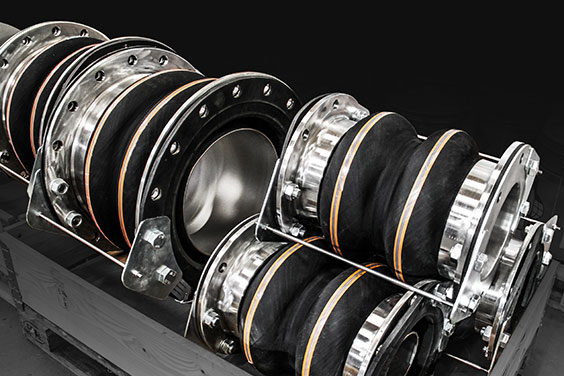
TECHNICAL DESCRIPTION
APPLICATIONS
Rubber Expansion Joints find use in a broad range of industries and applications such as:
- Power plants
- Desalination plants
- Water treatment plants
- Sewage systems
- Oil & gas
- Chemical plants
- Pulp and paper plants
- Ships
- Food and drinks process plants
In these plants Rubber Expansion Joints are commonly installed in/at: Cooling systems, Pumps, Heating, Ventilating, Air conditioning, Piping systems, Sanitary piping systems etc. in order til ensure a long service life of the piping systems.
- Hot water
- Cold water
- Waste water
- Compressed air
- Cooling water
- Sea water
- (Exhaust) Gas (up to 180°C)
- Acid and other chemicals
- Leach
- Oil
- Some oily medias
MOVEMENTS
Rubber Expansion Bellows absorb the following movements in either single plane or multiplane:
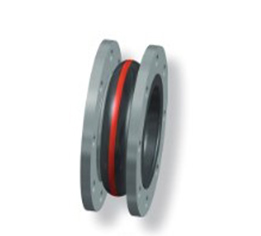
AXIAL (-)
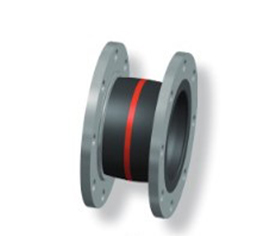
AXIAL (+)
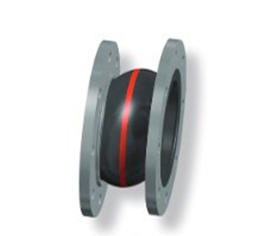
LATERAL (+/-)
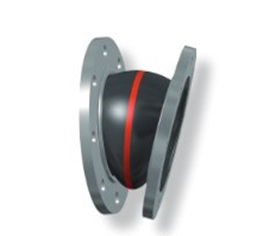
ANGULAR (+/-)
CONSTRUCTION
Belman Rubber Expansion Joints are designed and manufactured according to the need of the application and as per client specifications. If required by the client Belman can design according to any design code specified. The design and construction of the Rubber Expansion Joint is based on the application, surroundings and media – and therefore taking into consideration chemical resistance of internal layers, weather, ozone and UV-resistance of external layers, temperature and pressure resistance as well as movement absorption capabilities.
Rubber Expansion Bellows are build up by an outer cover and an inner cover which is medium resistant and then reinforcement which is pressure resistant. Depending on the design data further accessories suchs as vaccum supporting rings, inner sleeve, tie rods, gimbals etc. can be applied to the Rubber Compensators to make is as suitable as possible for the installation.
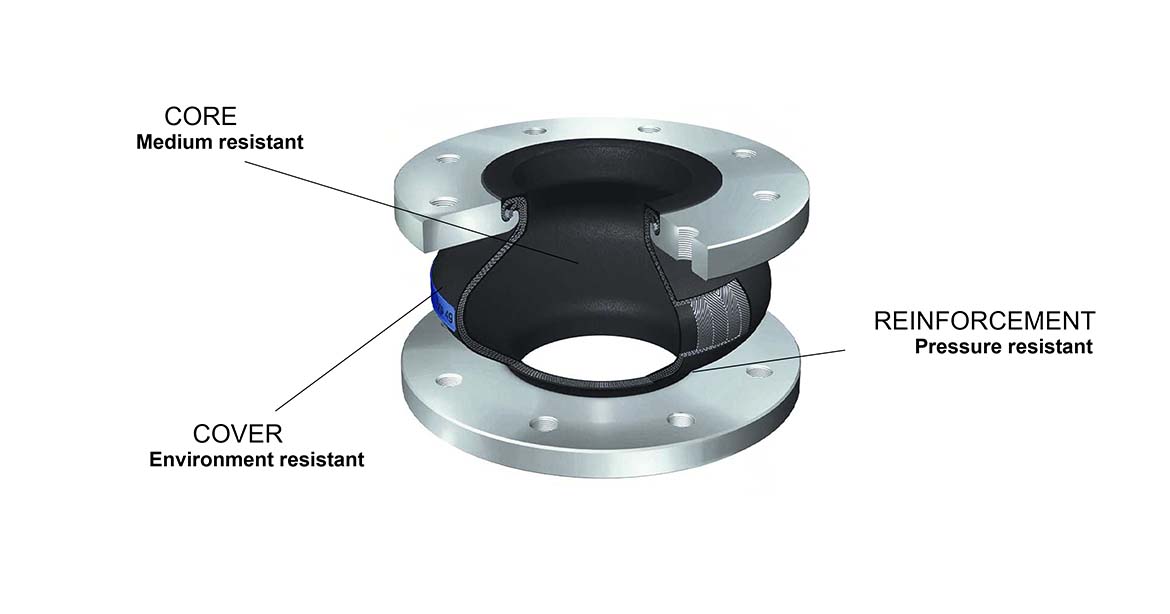
ADVANTAGES
What are the advantages of using Rubber Compensators?
- Optimum solution for narrow spaces, still able to absorb large movements due to the flexible bellows
- Absorb axial-, lateral-, and angular movements
- Temperature resistant
- Chemical resistant
- Corrosion resistant
- Reduce water shock
- Safe, reliable, durable
- Maintenance-free
- Managing flexibility and pressure is optimised
- Low spring rates
- Vacuum and pressure proof
- Can accommodate line misalignment
- Sound deadening effects
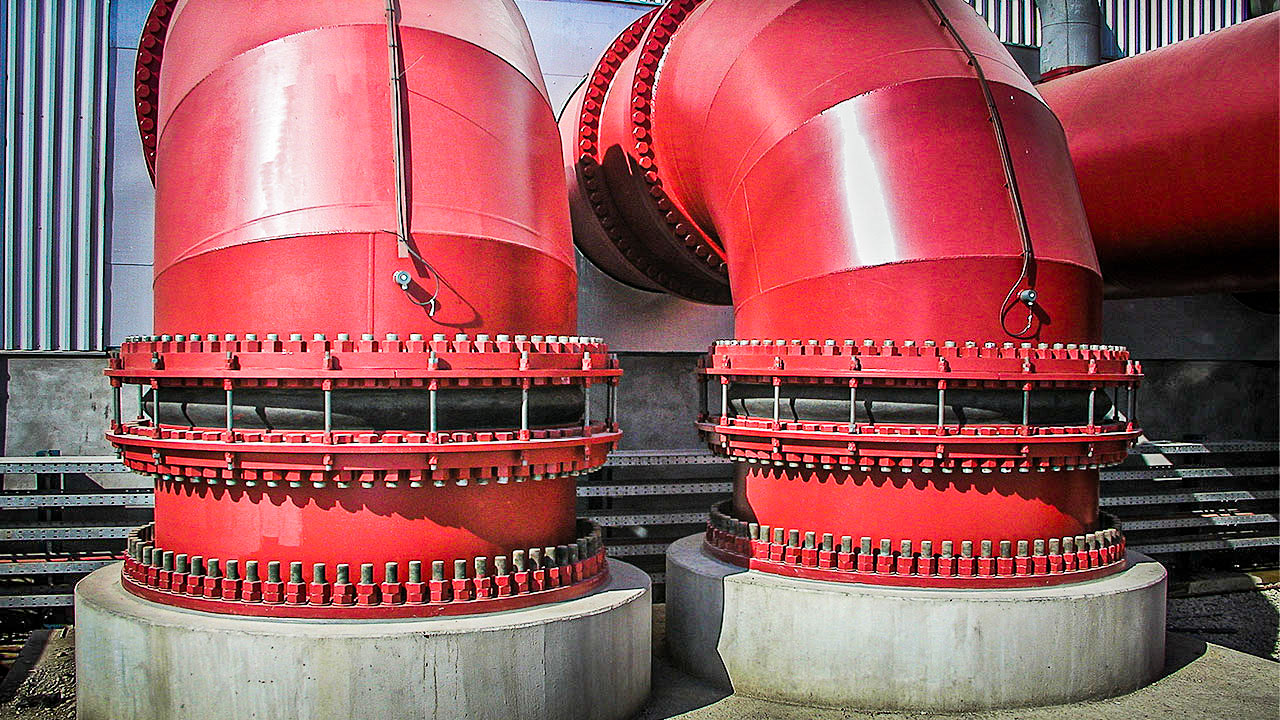
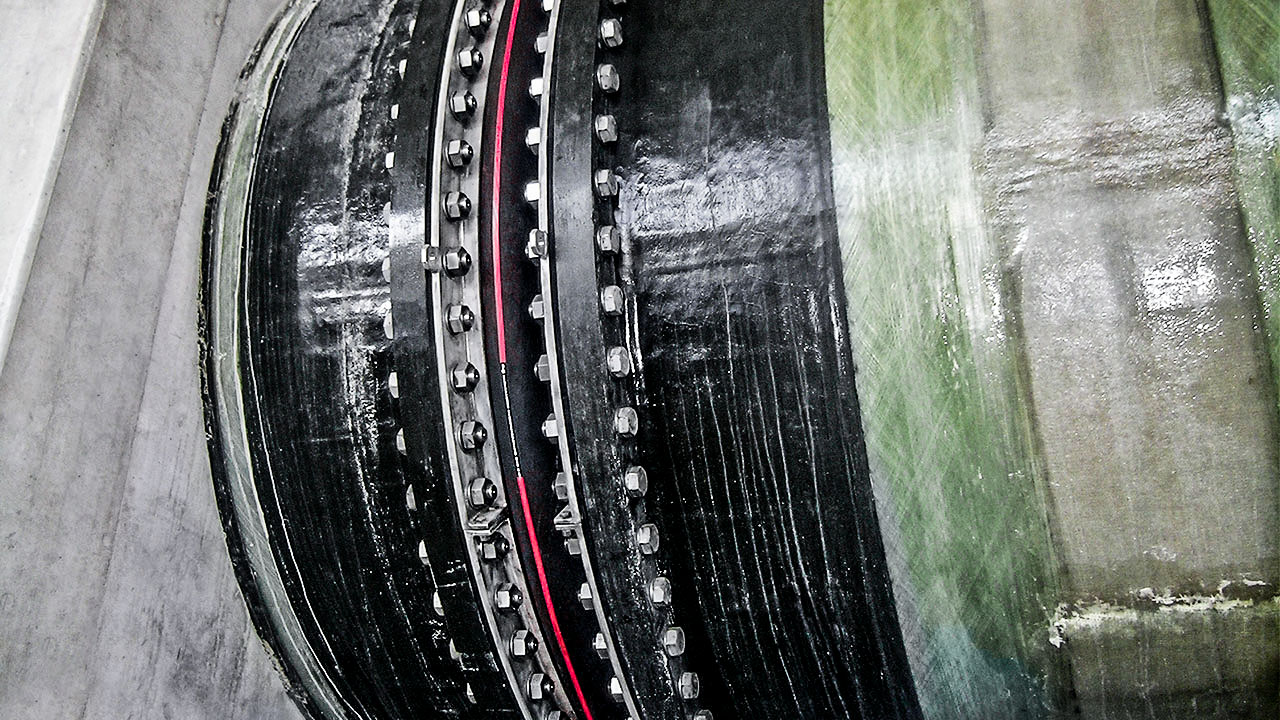
QUALITY & TESTS
Belman is known for high quality products and therefore our quality control is a fundamental part of our business. All processes during production, designed by the Belman quality engineers, are strictly followed and implemented according to our procedures and instructions and carefully inspected by Belman quality inspectors. All checks and inspections are done according to the strict prevailing Belman quality control procedures which is part of the Belman ISO 9001 quality management system approved by DNV.
ITP & Test
The Inspection Test Plan (ITP) generated by the quality management system makes sure that each step of manufacturing has the appropriate inspection points such as Hold and Witness points.
Based on manufacturing code, project specification, application, media, and eventual ship classification rules Belman performs a large variety of quality tests including destructive, non-destructive testing and proof testing:
- Destructive tests, such as life cycle test and burst test to validate the design, i.e., vessels and offshore platforms
- Non-destructive tests, such as visual testing, dye penetrant test, radiography examination, magnetic testing, ultrasonic testing, hardness testing and PMI for all applications
- Proof tests, such as leak test with air, leak test with helium and Formier Gas, hydrostatic pressure test for all applications
All tests can be witnessed by a 3rd party based on the customer and classification requirements.
Equinor (Statoil) • Ørsted • PKN Orlen • National Power • Vietnam Oil And Gas Group (Petrovietnam) • Chevron • Ministry of Energy and Water (MEW) • Korea East-West Power (Korea Electric Power Corporation) • Shell • Copenhagen Infrastructure Partners (CIP) •
DOW • Xylem • OKG • Stora Enso •
Conoco Phillips • ADWEA • RTCC • Saline water conversion corporation(SWCC) • Hitachi •
The National Company for Infrastructure • Fauji Fertilzer Company Ltd • Lundin Energy • BP • Abu Dhabi Transmission and Despatch Company (Transco) • Coppex S.p.A • Saline Water Conversion Cooperation (SWCC) • SSAB EMEA • Aker BP •
When to select a Rubber Expansion Bellow?
Rubber Expansion Joints are preferred over Metallic Expansion Joints in the event of low temperatures, non-aggressive media and when there is a need for noise reductions as well as vibrations occurring in the piping system.
What are the typical failures of Rubber Compensators?
The typical failures on Rubber Expansion Joints are:
- Bolt torque to high
- Wrong counter flanges
- Crack of reinforcement through over-stretching
- Mounting with sharp tools
- Drying-out due to high temperatures (>110°C) and gaseous mediums (i.e. air)
- Medium in-compatibility of the rubber
- Torsion (wringing)
- Using for vacuum applications without support ring
What information is needed to design Rubber Bellows?
To design a Rubber Expansion Joint, Belman needs to know the following:
- Nominal diameter / Connection
- Pressure (working/design pressure)
- Medium
- Temperature (working/design pressure)
- Needed movement
- Flow rate / flow speed
- What kind of plant / engine / machine (if necessary CE-Marking)
- With / without third party Inspection (TÜV, GL, LR, etc.)




